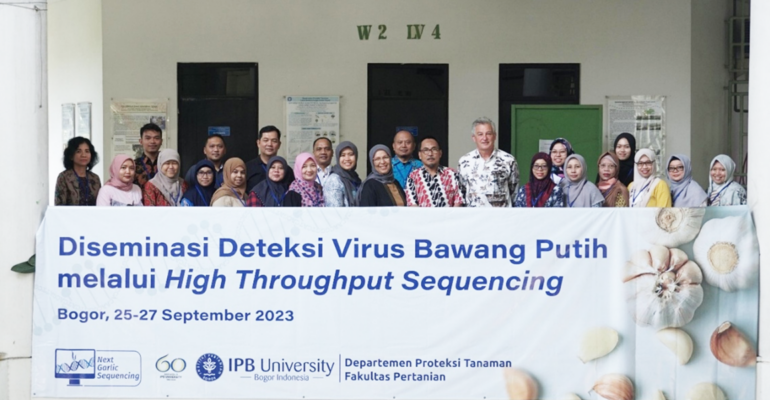IPB University Disseminates High-Throughput Sequencing Technology as a Virus Detection Method in Garlic

IPB University, through the Department of Plant Protection, Faculty of Agriculture (Faperta), conducted a dissemination of virus detection in garlic through high-throughput sequencing (HTS) technology. This activity aims to introduce and share research results with the public related to the development of plant virus detection and identification techniques, especially in garlic, through HTS technology, commonly referred to as next-generation sequencing (NGS).
“One of the advantages of using HTS is that this technology not only detects the target virus (known virus) but also the nontarget virus (unknown virus) at one time,” explained Dr Sari Nurulita, lecturer at the Department of Plant Protection, IPB University.
Prof Sri Hendrastuti Hidayat added, “This technology application can be developed for plant quarantine in Indonesia as the frontline to cut off the entry of quarantine plant pathogens (OPTK) class A1.”
The event also presented the development of plant virus detection technology from time to time. In addition, Associate Prof Stephen Harper from the University of Queensland, Australia, presented a public lecture on strategies to increase healthy garlic production.
The activity, which took place in the Conference Room of the Department of Plant Protection and IPB University’s Computer Laboratory, was attended by a number of participants from research institutions and universities. Most of them came from the Indonesian Quarantine Agency, as well as from the National Research and Innovation Agency (BRIN), Sebelas Maret University, Pontianak State Polytechnic, and Bengkulu University. At the end of the event, participants also delivered presentations related to HTS data analyzed through a bioinformatics approach.
“This HTS technology dissemination activity is expected to increase the utilization of the latest technology in various aspects of the plant protection field as well as strengthen good cooperation between educational institutions, researchers, and policymakers,” said Dr Hidayat. (*/Rz) (IAAS/MZS)



